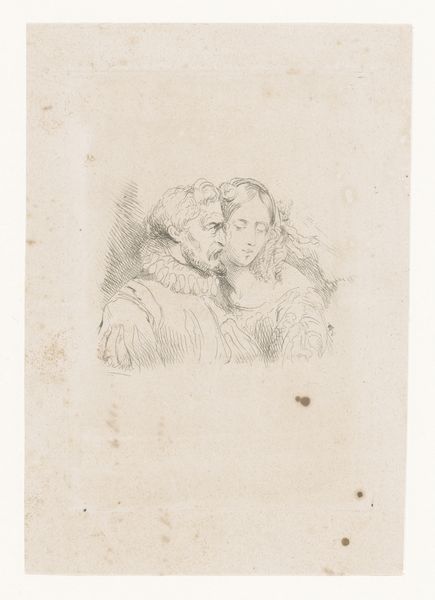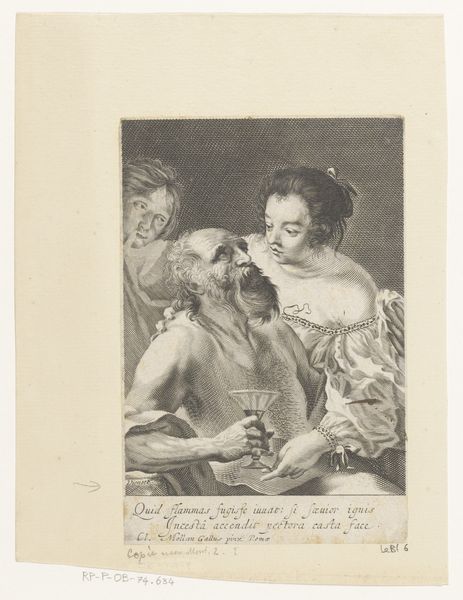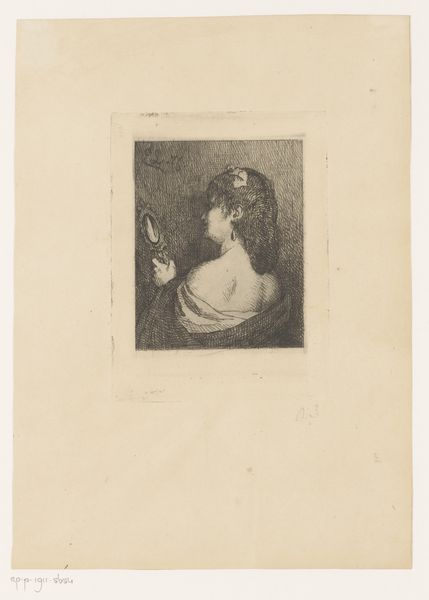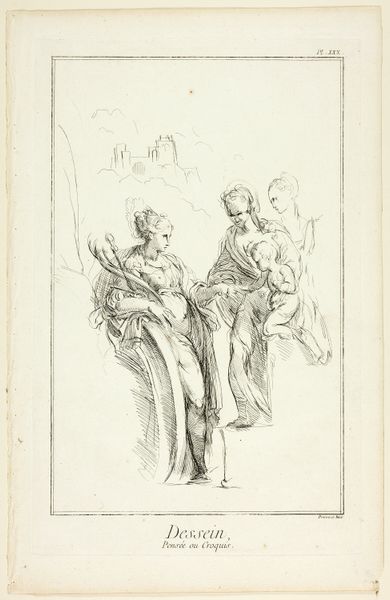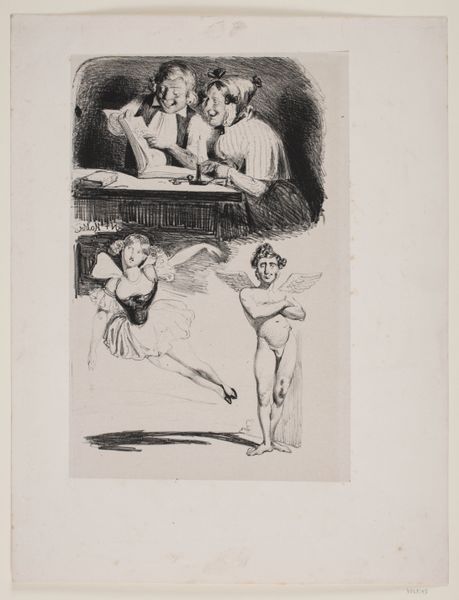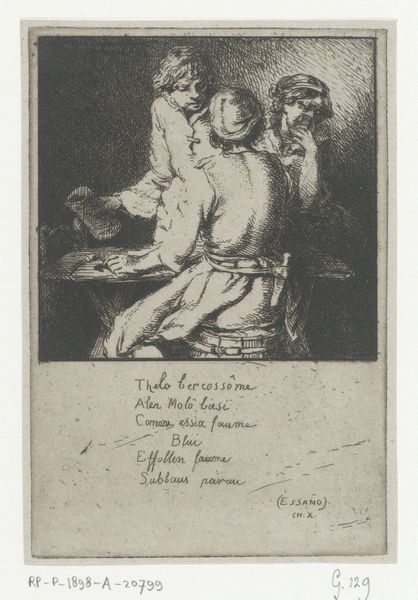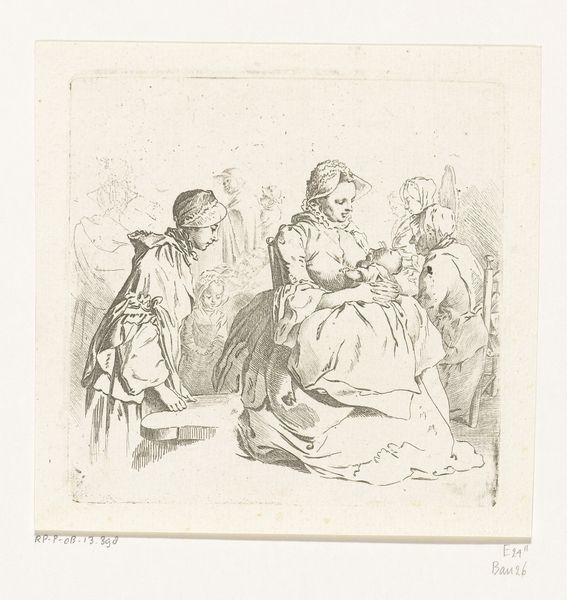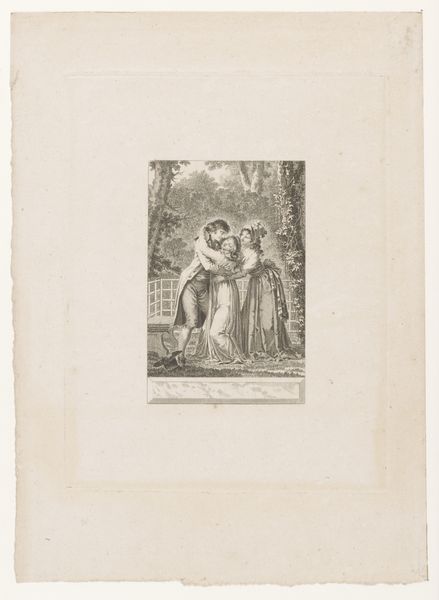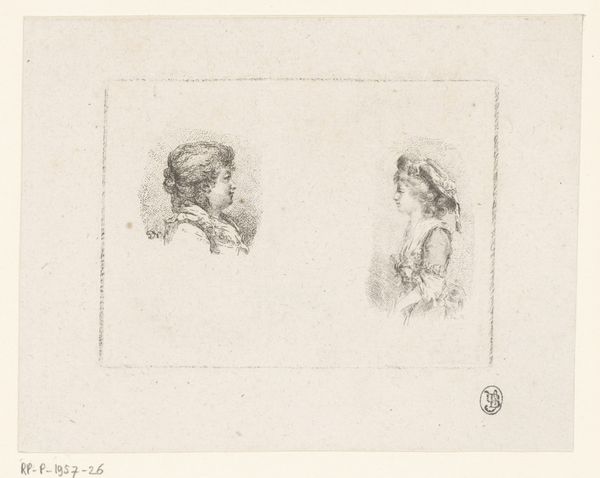
Zelfportret van de kunstenaar met twee jonge vrouwen als modellen c. 1817
0:00
0:00
drawing, pencil
#
portrait
#
pencil drawn
#
drawing
#
pencil sketch
#
caricature
#
pencil drawing
#
group-portraits
#
romanticism
#
pencil
#
portrait drawing
Dimensions: height 291 mm, width 222 mm
Copyright: Rijks Museum: Open Domain
Editor: This drawing, "Self-Portrait of the Artist with Two Young Women as Models," circa 1817, attributed to baron Dominique Vivant Denon, feels like a very personal and intimate look at the artist's process. The raw quality of the pencil makes it immediate, almost like we're peeking into his sketchbook. What can you tell me about this piece? Curator: It's intriguing how Denon presents himself. We must consider the power dynamics at play during the Romantic era, where artists often cultivated specific public personas. Notice how he positions himself actively drawing, presenting himself as an intellectual, yet also places two young women – his models – in close proximity. How might the institutional gaze, the art world of the time, have influenced this depiction? Editor: That’s interesting. I hadn’t really considered the…well, almost theatricality of it. Does this maybe say something about how artists wanted to be perceived at the time? Curator: Precisely! The artwork wasn’t solely for private contemplation. Consider who this drawing may have been intended for. Was it purely for Denon’s own amusement, or perhaps for a select circle of fellow artists or patrons? Also consider Denon's position: he was not only an artist but also the director of the Louvre! This role granted him significant power in shaping artistic taste and influencing the careers of other artists. Does the artwork therefore constitute propaganda for a new elite? Editor: It does make you wonder if he’s subtly showcasing his influence. Curator: Exactly. We see not just a portrait, but a performance of artistry and status, deeply embedded in the social and political landscape of early 19th-century France. Understanding that helps unpack the complexities of even a seemingly simple sketch. Editor: That’s given me so much to think about! I initially saw it as a personal sketch, but understanding its historical and social context makes it so much richer. Thanks!
Comments
No comments
Be the first to comment and join the conversation on the ultimate creative platform.
